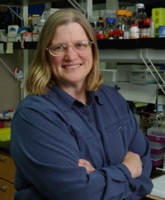非常抱歉,
你要访问的页面不存在,
非常抱歉,
你要访问的页面不存在,
非常抱歉,
你要访问的页面不存在,
验证码:

职称:Jerome and Isabella Karle Distinguished University Professor of Chemistry, College of LSA Professor of Biological Chemistry, Medical School, Dean of Rackham Graduate School
所属学校:University of Michigan-Ann Arbor
所属院系:Department of Chemistry
所属专业:Chemistry, General
联系方式:734.936.2678
Our goal is to understand the mechanisms used by biological catalysts, both proteins and nucleic acids, to achieve high efficiency, stringent specificity and rigorous control. An understanding of these principles is essential for: understanding biological catalysis in vivo, designing novel inhibitors for therapeutic use, and developing novel catalysts for a variety of tasks, including organic synthesis and quantitative analysis of complex mixtures. We are elucidating catalytic mechanisms and essential active site features of metalloenzymes and ribozymes, including protein farnesyltransferase, UDP-3-O-acyl-GlcNAC deacetylase, histone deacetylase and ribonuclease P. These studies should enhance our ability to design potent inhibitors of these enzymes useful for the treatment of cancer or bacterial infections. In particular, we are investigating the role of proteins in modulating the reactivity of bound Zn(II) and developing methods for identifying novel metal sites in proteins. We are also investigating the biological importance of protein prenylation and acetylation. Finally, we are elucidating the role of metal ions and protein/RNA interactions in ribonuclease P, a ribozyme/protein complex. These studies are increasing our understanding of the catalytic modes used by ribozymes in comparison to protein catalysts. We are testing our understanding of biological catalysis by the rational design or redesign of an enzyme. To this end, we are redesigning the zinc metalloenzyme, carbonic anhydrase II, to optimize a fluorescent biosensor for measuring and imaging metal ions in complex biological mixtures. Zinc ions are proposed to play important signaling roles in vivo, especially in neurobiology, which can investigated using novel imaging methods. Additionally, we are using "directed evolution" approaches to prepare and identify aldolase variants with novel substrate specificities. These aldolase variants will be used to improve the utility of these enzymes as biocatalysts for organic synthetic reactions. Characterization of the structure and function of these novel proteins will provide insights into catalysis, molecular recognition and molecular evolution.
Our goal is to understand the mechanisms used by biological catalysts, both proteins and nucleic acids, to achieve high efficiency, stringent specificity and rigorous control. An understanding of these principles is essential for: understanding biological catalysis in vivo, designing novel inhibitors for therapeutic use, and developing novel catalysts for a variety of tasks, including organic synthesis and quantitative analysis of complex mixtures. We are elucidating catalytic mechanisms and essential active site features of metalloenzymes and ribozymes, including protein farnesyltransferase, UDP-3-O-acyl-GlcNAC deacetylase, histone deacetylase and ribonuclease P. These studies should enhance our ability to design potent inhibitors of these enzymes useful for the treatment of cancer or bacterial infections. In particular, we are investigating the role of proteins in modulating the reactivity of bound Zn(II) and developing methods for identifying novel metal sites in proteins. We are also investigating the biological importance of protein prenylation and acetylation. Finally, we are elucidating the role of metal ions and protein/RNA interactions in ribonuclease P, a ribozyme/protein complex. These studies are increasing our understanding of the catalytic modes used by ribozymes in comparison to protein catalysts. We are testing our understanding of biological catalysis by the rational design or redesign of an enzyme. To this end, we are redesigning the zinc metalloenzyme, carbonic anhydrase II, to optimize a fluorescent biosensor for measuring and imaging metal ions in complex biological mixtures. Zinc ions are proposed to play important signaling roles in vivo, especially in neurobiology, which can investigated using novel imaging methods. Additionally, we are using "directed evolution" approaches to prepare and identify aldolase variants with novel substrate specificities. These aldolase variants will be used to improve the utility of these enzymes as biocatalysts for organic synthetic reactions. Characterization of the structure and function of these novel proteins will provide insights into catalysis, molecular recognition and molecular evolution.